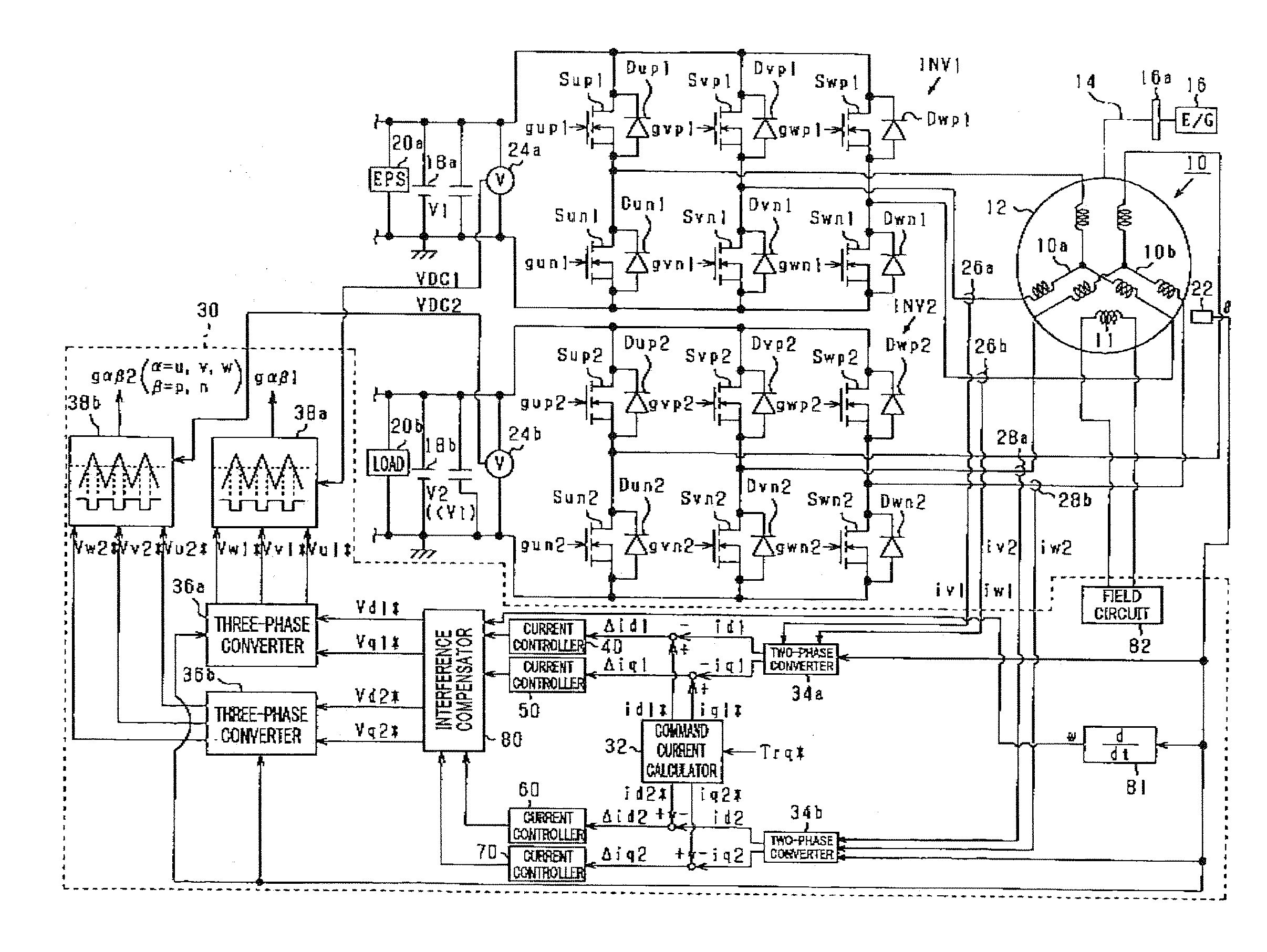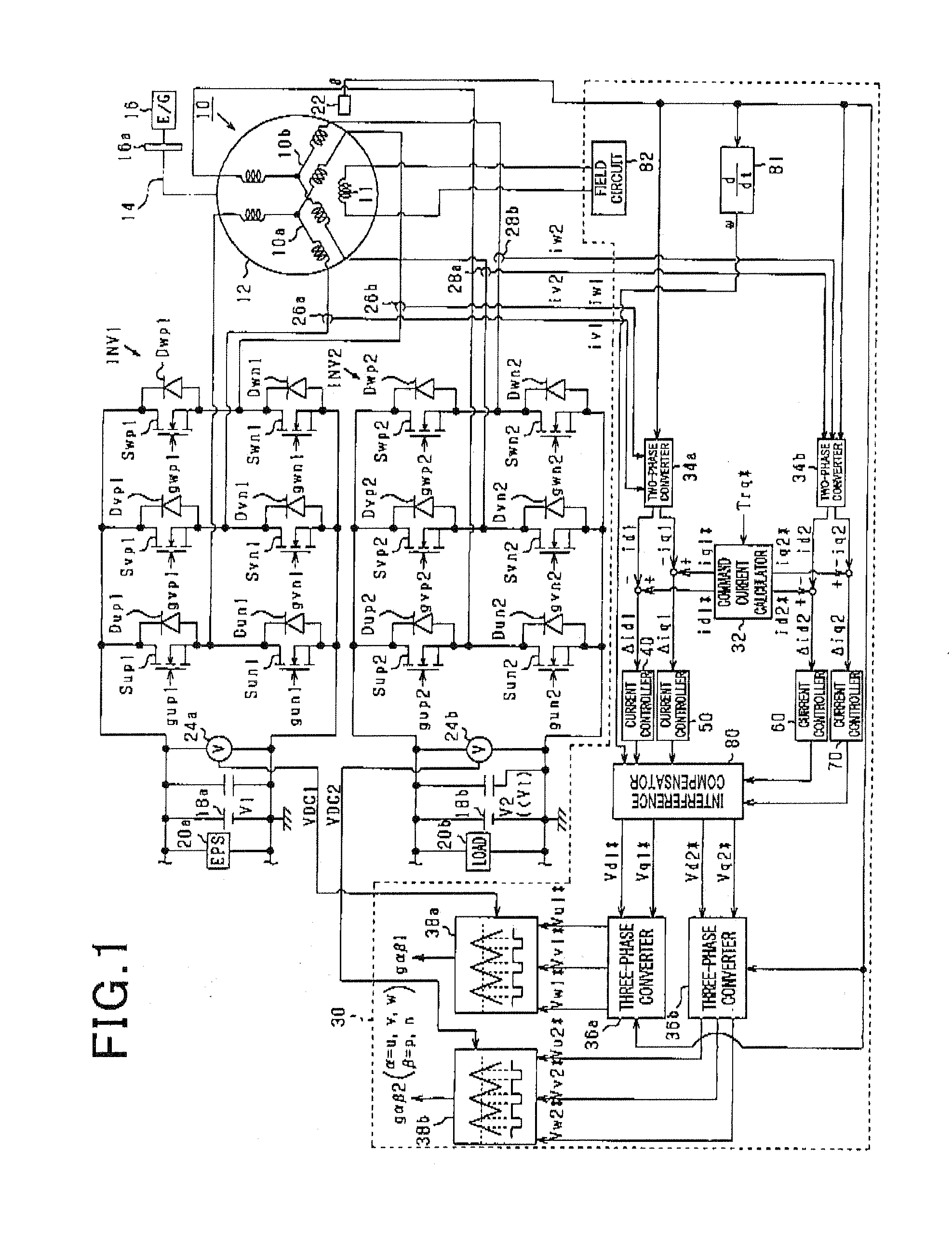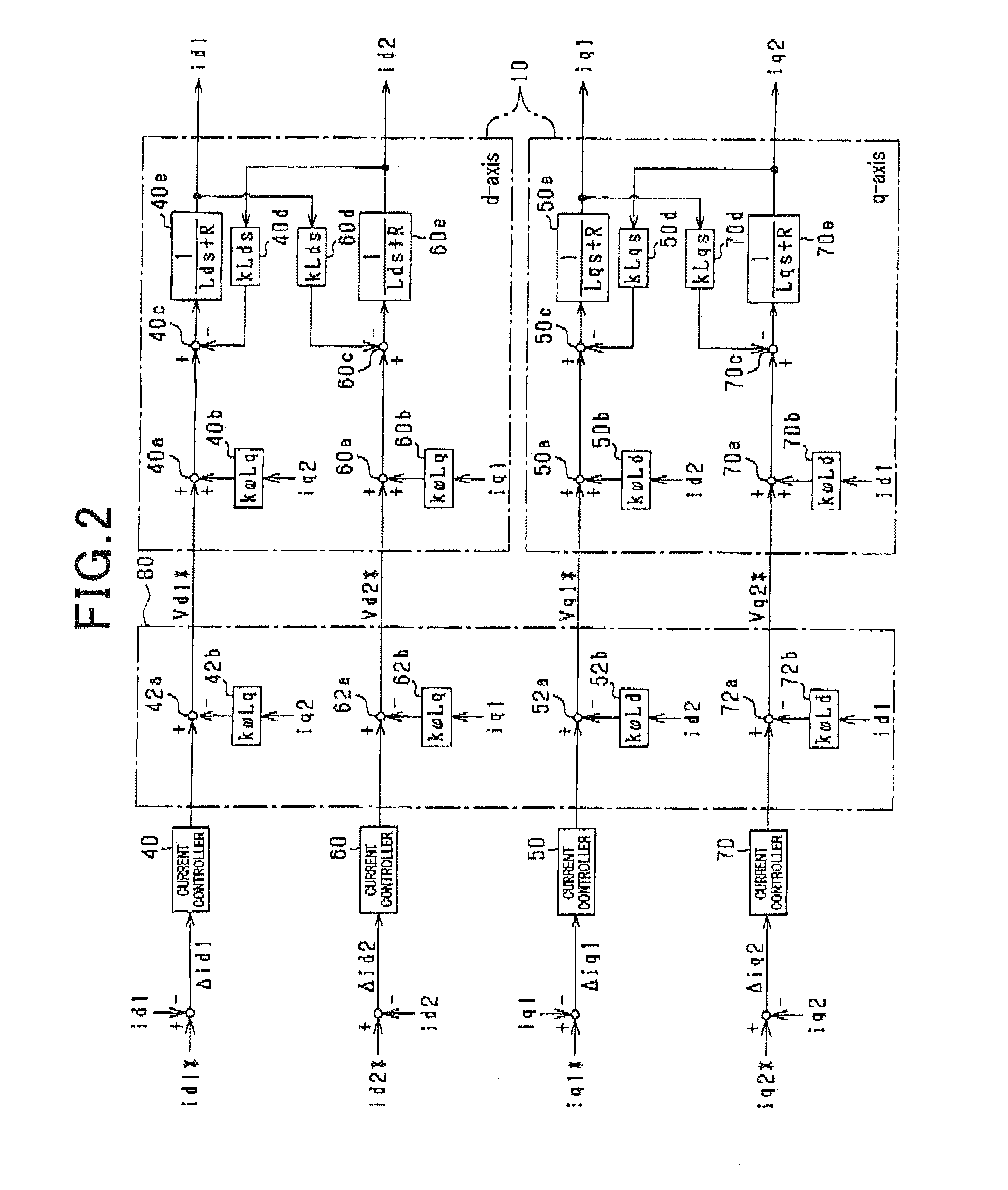Apparatus for controlling a multi-winding rotary machine
a rotary machine and multi-winding technology, applied in the direction of motor/generator/converter stopper, dynamo-electric gear control, dynamo-electric converter control, etc., can solve the problem of increasing torque error, and achieve the effect of improving the responsiveness of the current control system and reducing the torque error of the rotary machin
- Summary
- Abstract
- Description
- Claims
- Application Information
AI Technical Summary
Benefits of technology
Problems solved by technology
Method used
Image
Examples
first embodiment
[0025]There will now be explained a control apparatus for controlling a multi-winding rotary machine with reference to the accompanying drawings, where the control apparatus is mounted in a vehicle including an engine as a vehicle prime mover.
[0026]As shown in FIG. 1, a motor 10 is a three-phase double winding rotary machine, more specifically, a wound-field synchronous electrical motor. In the present embodiment, the motor 10 may be an integrated starter generator (ISG) that functions both as a starter and an alternator. A rotor 12 of the motor 10 includes field windings 11. Power transmission is enabled between the rotor 12 and a crankshaft 16a of an engine 16. In the present embodiment, the rotor 12 is connected to a crankshaft 16a via a belt 14.
[0027]A stator of the motor 10 includes two sets of three-phase windings: a first winding set 10a and a second winding set 10b. The first and second winding sets 10a, 10b have respectively different neutral points.
[0028]Two inverters, one...
second embodiment
[0085]There will now be explained a second embodiment of the present invention. Only differences of the second embodiment from the first embodiment will be explained.
[0086]In the present embodiment, the interference compensator 80 is modified in configuration as follows.
[0087]FIG. 9 shows a schematic block diagram of a current control system for the motor 10 of the present embodiment. Elements having similar functions as in the first embodiment are assigned the same numbers.
[0088]In the present embodiment, the first d-axis current controller 40 calculates a current value as a manipulated variable to feedback control the first d-axis current id1 to the first d-axis command current id1*. The first d-axis command voltage is calculated by inputting the current value calculated in first d-axis current controller 40 into a transfer function 42c that represents the impedance for the d-axis of the motor 10. Similarly, the second d-axis current controller 60 calculates a current value as a m...
third embodiment
[0095]There will now be explained a second embodiment of the present invention. Only differences of the third embodiment from the second embodiment will be explained.
[0096]In the present embodiment, the interference compensator 80 is further modified in configuration as follows.
[0097]FIG. 12 shows a schematic block diagram of a current control system for the motor 10 of the present embodiment. Elements having similar functions as in the second embodiment (see FIG. 9) are assigned the same numbers.
[0098]In the present embodiment, the command voltages Vd1*, Vq1*, Vd2*, Vq2* are compensated not only for their respectively corresponding rotation speed interfering voltages, but also for their respectively corresponding derivative interfering voltages.
[0099]More specifically, a first d-axis derivative voltage compensator 42d sums a first d-axis derivative interfering voltage and a first d-axis command voltage outputted from the transfer function 42c to feed the summed value to the first d...
PUM
 Login to View More
Login to View More Abstract
Description
Claims
Application Information
 Login to View More
Login to View More - R&D
- Intellectual Property
- Life Sciences
- Materials
- Tech Scout
- Unparalleled Data Quality
- Higher Quality Content
- 60% Fewer Hallucinations
Browse by: Latest US Patents, China's latest patents, Technical Efficacy Thesaurus, Application Domain, Technology Topic, Popular Technical Reports.
© 2025 PatSnap. All rights reserved.Legal|Privacy policy|Modern Slavery Act Transparency Statement|Sitemap|About US| Contact US: help@patsnap.com



